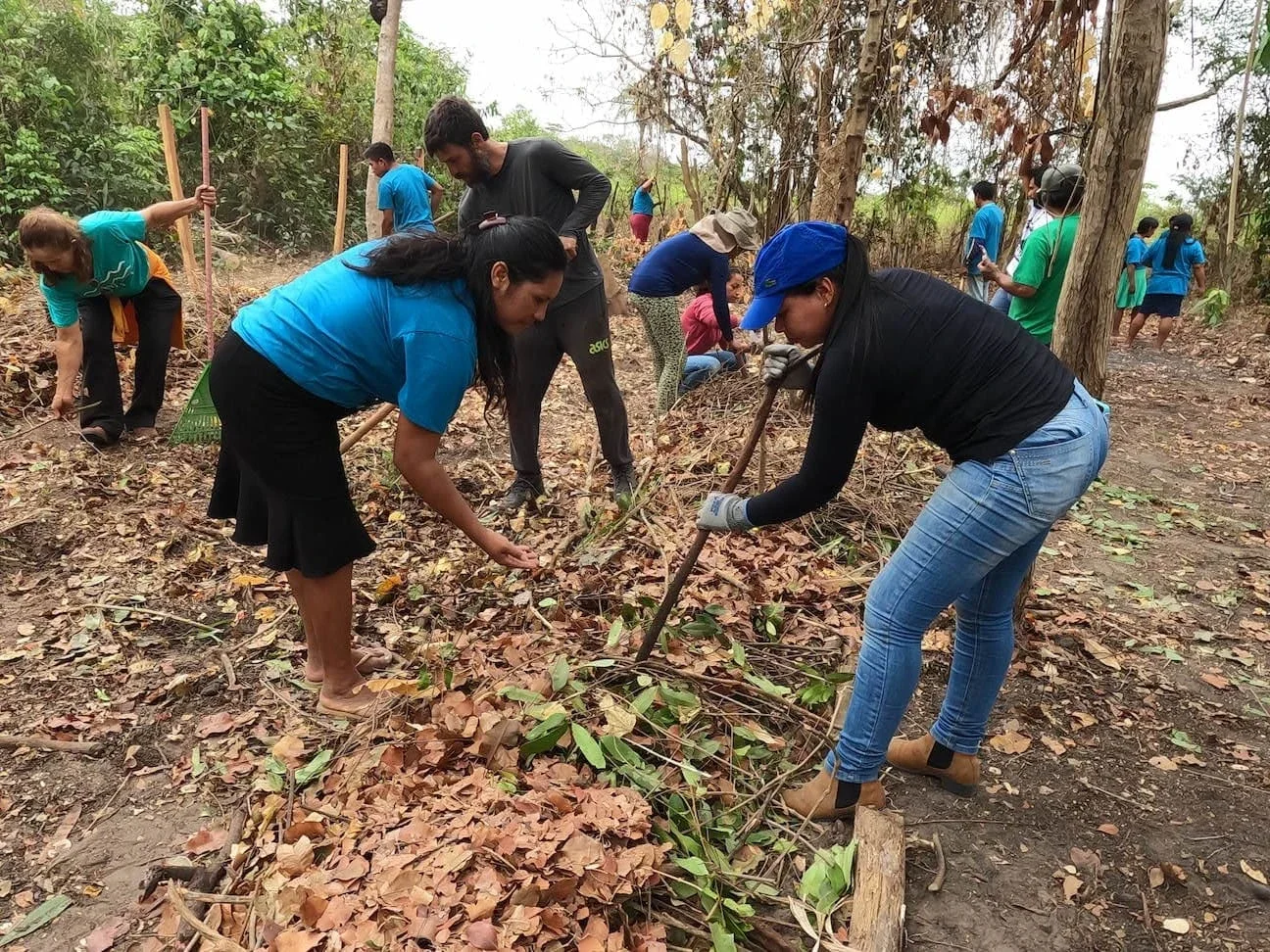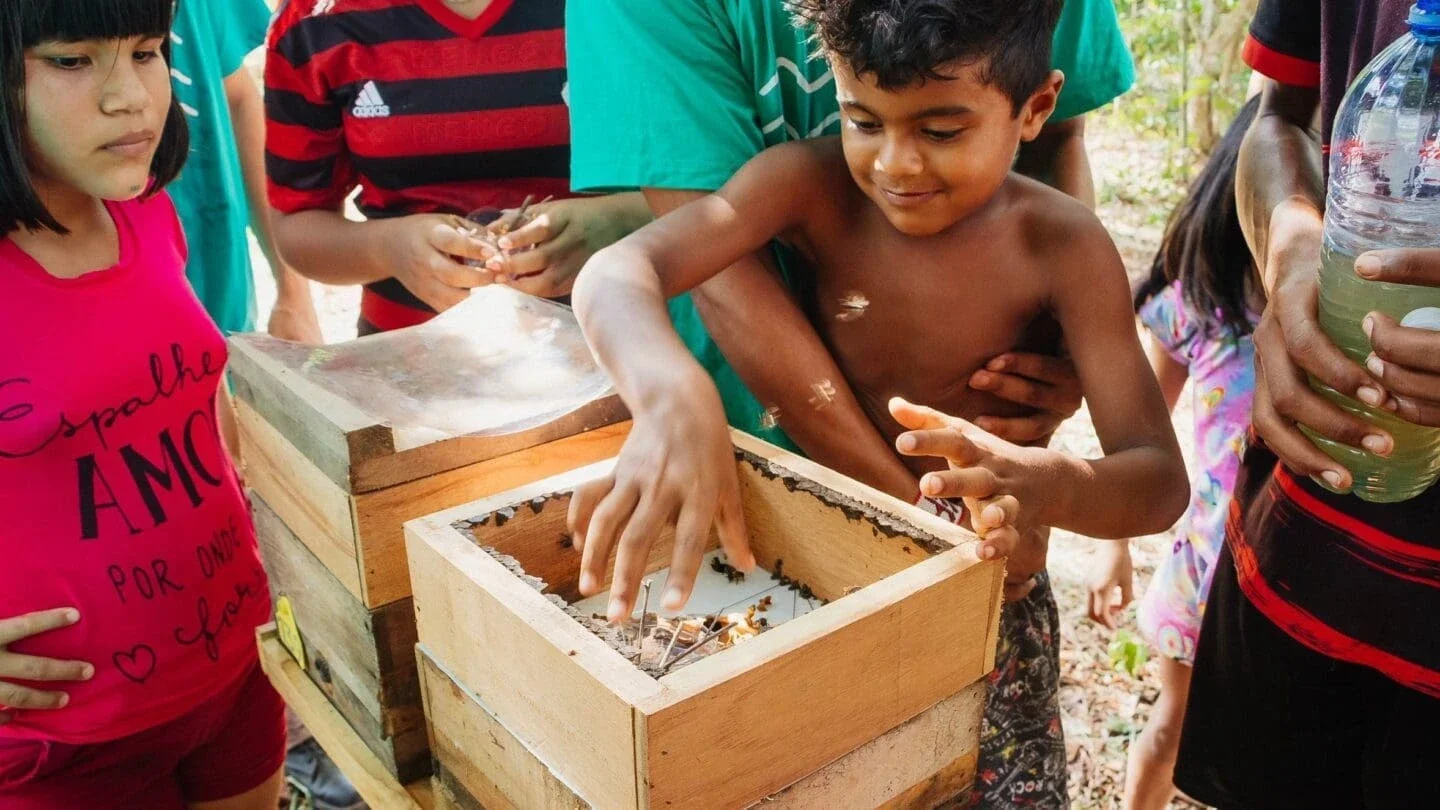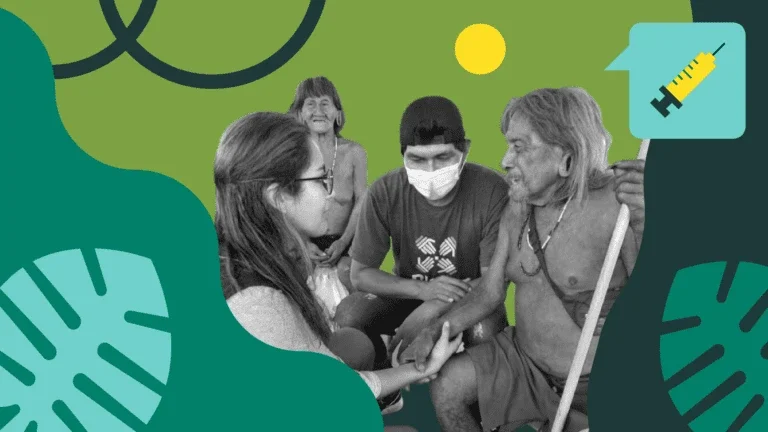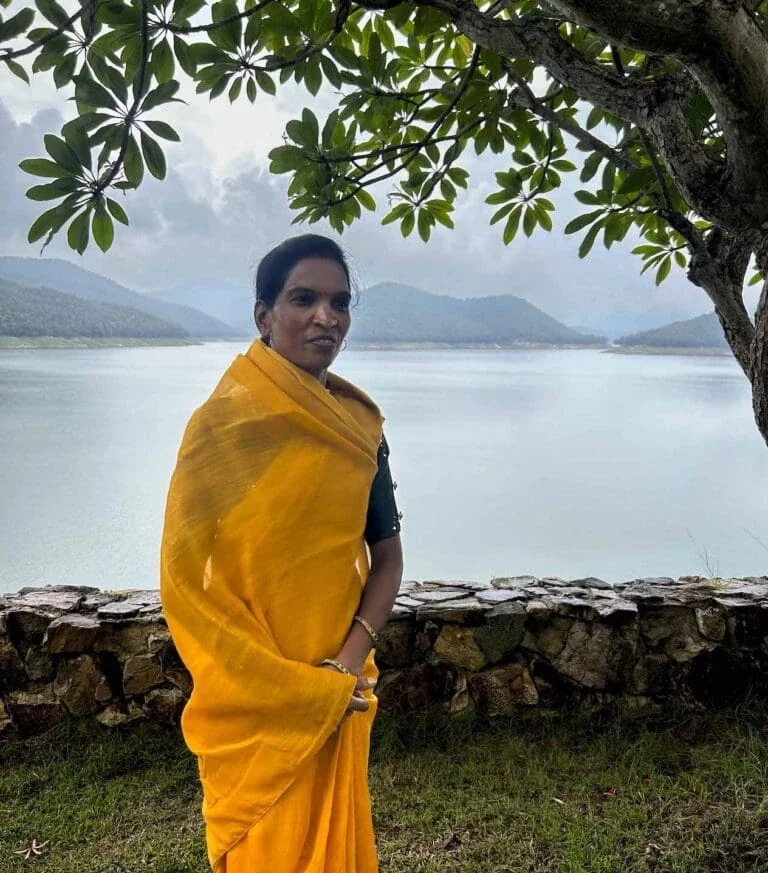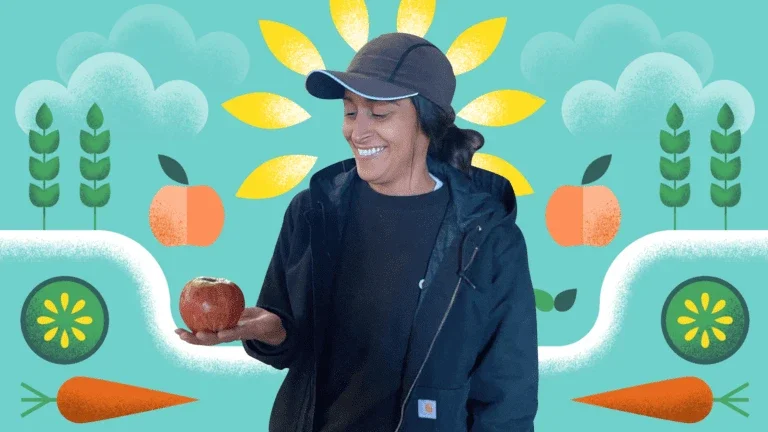Climate solutions cannot be imposed from outside. We must be guided by the communities. For Meli Bees, it is about respecting Indigenous wisdom and local realities.
Ana Rosa de LimaFounder, Meli Bees Network gUG
The Amazon region is a linchpin in the fight against climate change—a natural climate protector. Its rainforest acts like a giant sponge soaking up carbon—in fact, its estimated 150-billion-ton-plus carbon bank is the equivalent of more than 10 years’ worth of global fossil fuel emissions, researchers estimate.
It makes its own weather while stabilizing regional temperatures and influencing global weather patterns through the moisture it releases into the atmosphere. And its enormous biodiversity plays an enormous role in maintaining ecosystem stability and resilience.
Why Is the Amazon Rainforest So Special? Here’s the Data
- The Amazon rainforest covers ~6.7 million square kilometers (~2.6 million square miles).
- It has been in existence for at least 55 million years.
- Its forests and soils store an estimated 150-200 billion tons of carbon, and it is often called the “lungs of the Earth.”
- Close to 20 percent of the Amazon has been deforested over the last 50 years.
- Halting and reversing land clearance in tropical forests could reduce carbon emissions by nearly 18 percent by 2030, researchers predict.
- ~2 to 5 percent of sunlight reaches the forest floor in some places due to the canopy layer.
- The Amazon River is the world’s largest by volume, releasing so much water into the Atlantic that it alters the sea level in the Caribbean.
- Some 47 million people live in the Amazon, including more than 2 million Indigenous.
- Most of the rainforest lives in Brazil, but it spans nine countries.
- ~390 billion individual trees grow in the Amazon.
- ~2.5 million insect species, 2,000 bird and mammal species and 2,200 fish species live in the Amazon.
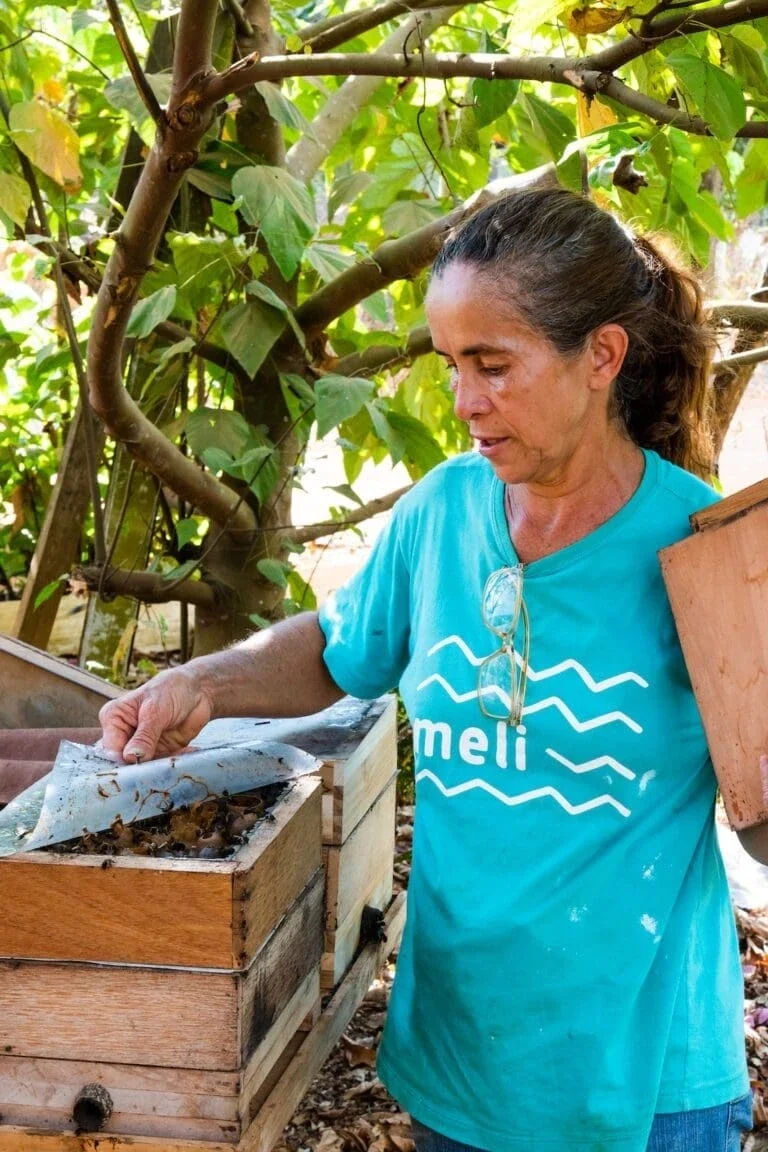
Local Communities Lead the Way in Combatting Climate Change
Today, however, the Amazon reflects the impacts of inequality, over-consumption, and alienation, de Lima says.
So Meli Bees helps communities, now numbering more than 60 and growing, develop restorative projects. Retomada at work.
De Lima named the organization after the meliponini bees, also known as stingless bees, found in tropical and subtropical regions. Indigenous communities in Brazil often use the bees’ honey for medicinal purposes, and in turn, they protect the nesting sites for the bees, which pollinate a diversity of plants.
The nonprofit’s projects are often as individual as the communities themselves. “Stronger Indigenous communities will be better prepared to protect the forest,” de Lima said.
It began four years ago with a crowdfunding focused on stingless native beekeeping. Seeing how it resonated with multiple communities and a year later, she launched the nonprofit, adding regenerative farming and storytelling listening sessions to encourage elder community members to share and reflect on their own narratives.
Currently, it is focused on supporting community-led food sovereignty projects that simultaneously help restore the soil and forests.
The network also engages with researchers and universities, but only when communities themselves raise questions, so as not to be data-extractive.
The Rockefeller Foundation grant that helps support Meli Bees is also supporting Indigenous food systems projects in Kenya, Nigeria, Fiji, and Canada.
“Indigenous communities are on the frontline of climate change impacts, as well as mitigation and adaptation efforts,” said John de la Parra, Director, Food Initiative, The Rockefeller Foundation. “Indigenous food systems promote both biodiversity and dietary diversity in an inherently regenerative way. It is past time for capital to shift toward supporting these methods of natural resource management.”
A Visit to Indigenous Roots
De Lima, now 32, was raised in Maraba, a city and economic hub in the heart of the Amazon rainforest that is also in the “Arc of Deforestation,” a crescent-shaped belt of rapidly disappearing forest, mostly in Brazil.
There, agriculture, illegal logging, and infrastructure development has disrupted ecosystems, had significant environmental consequences, and contributed to the loss of traditional Indigenous territories.
“Crimes against the environment are often crimes against human rights,” de Lima said.
While working at a German university, de Lima recognized “the Global North’s lack of understanding of the Global South. I realized this deficiency would make it hard to create the partnerships we need.”
Retomada has personal meaning for de Lima. Just this autumn, she traveled to the place of her mother’s childhood among the Kambeba people in the Alto Solimoes region near the border with Columbia and Peru, asking her mother to accompany her.
“She hadn’t been back for at least 35 years, but Kambeba leaders nevertheless recognized her,” de Lima said, still registering surprise. “I also felt very welcome and better understood my roots.”
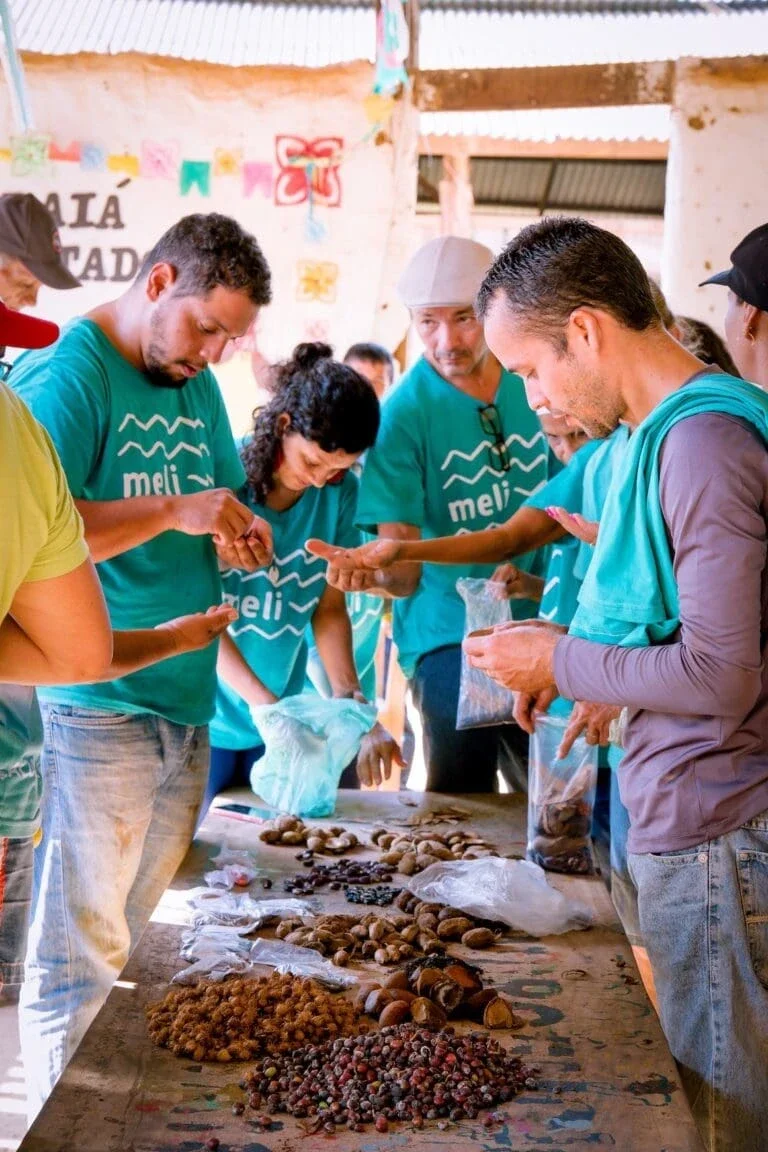
But she also saw the impacts of climate change, particularly in the part of the Amazon River that flows through the Alto Solimoes area. “My mother told me afterwards she never imagined the river would be so damaged. We heard about fish dying, though people didn’t know why.
“And my grandparent’s home doesn’t exist anymore because of erosion,” de Lima said, tears gathering in her eyes. “At the same time, the deforestation that I grew up with is not present. That’s why it’s important to remember that each locality faces its own problems, and we need to develop regenerative activities adapted to each territory.”
More in this Matter of Impact Edition
Climate Wisdom from the Frontlines
From the Amazon rainforest, to bustling Bangkok streets, to a Baltimore composter creating “black gold," dive into this quarter's Matter of Impact focused on youth changemakers and impacted communities.
Read MoreHow To Chart a Course for Food Security in a Changing Climate
New research aims to identify the most carbon-efficient methods to cultivate rice.
Read More